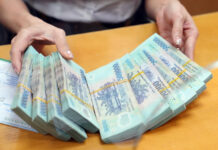Vietnam’s mangoes are taking the world by storm, with a significant boost in exports to key markets like China, the US, and South Korea. In the first seven months of 2024, Vietnam’s fruit and vegetable exports reached $3.88 billion, a impressive 25.9% increase compared to the same period last year.
China remains the largest importer of Vietnamese produce, with exports reaching nearly $2.5 billion, a 25% increase year-on-year. Among the various fruits and vegetables, mangoes have become a favorite among Chinese consumers, alongside durian, lychees, bananas, and especially mangos.
According to data from the Chinese Customs, China imported 13,210 tons of mangos in the first half of 2024, valued at $6.78 million. While the volume increased by 35.8%, the value decreased by 13.6% compared to the previous year. Vietnam emerged as China’s top mango supplier, providing 6,854 tons, worth $3.8 million. This remarkable growth represents a 122.3% surge in volume and a 200% increase in value compared to the same period in 2023.

Vietnamese mangoes have successfully entered the Chinese market through official channels, and their affordable prices and superior quality have earned them a reputation for being even better than those from Thailand, Myanmar, and Cambodia.
A Chinese agricultural expert on Q2d attributed the success of Vietnamese mangoes to the country’s favorable natural conditions, which result in healthy mango trees with minimal pests and high yields, coupled with low labor costs, making the fruit competitively priced.
The timing of mango harvests in Vietnam and China also plays a role in their trade relationship. While mangoes in Hainan, China’s renowned mango-growing region, are typically harvested from April to August, and those in Guangxi from early June to mid-September, Vietnamese mangoes ripen earlier, from March to May. As a result, China often imports large quantities of Vietnamese mangoes during this period, with the most popular varieties being green mango, Australian mango, and sweet mango.
Vietnamese mangoes have reached over 40 countries, with China being the largest market, accounting for nearly 84.6% of exports. The US, South Korea, the EU, and Japan are also significant importers, propelling Vietnam to become the 13th largest mango exporter in the world.
Notably, former US Ambassador to Vietnam, Daniel J. Kritenbrink, fondly recalled his first taste of Vietnamese mangoes in Can Tho in 2018, declaring them the “best mangoes I’ve ever had in my life. I would say they are among the best in the world.”
In June, the first batch of green mangoes from Can Tho was exported to Australia and the US by air. Similarly, An Giang exported 18 tons of its renowned keo mangoes to South Korea, marking a significant step towards entering demanding markets.
According to the Plant Protection Department (PPD) under the Ministry of Agriculture and Rural Development, Vietnam currently has over 114,000 hectares of mango plantations, yielding nearly 969,000 tons annually.
The provinces with the largest mango production are Son La, Dong Thap, An Giang, and Dong Nai, with the Mekong Delta being the largest mango-growing region, accounting for 49,900 hectares. Dong Thap alone has over 14,000 hectares of mango plantations, producing nearly 140,000 tons per year.
The Ministry of Agriculture and Rural Development has set an ambitious goal for Vietnam’s mango industry: by 2030, the country aims to have approximately 140,000 hectares of mango plantations, yielding 1.5 million tons of fruit, with export revenue reaching $650 million.





































